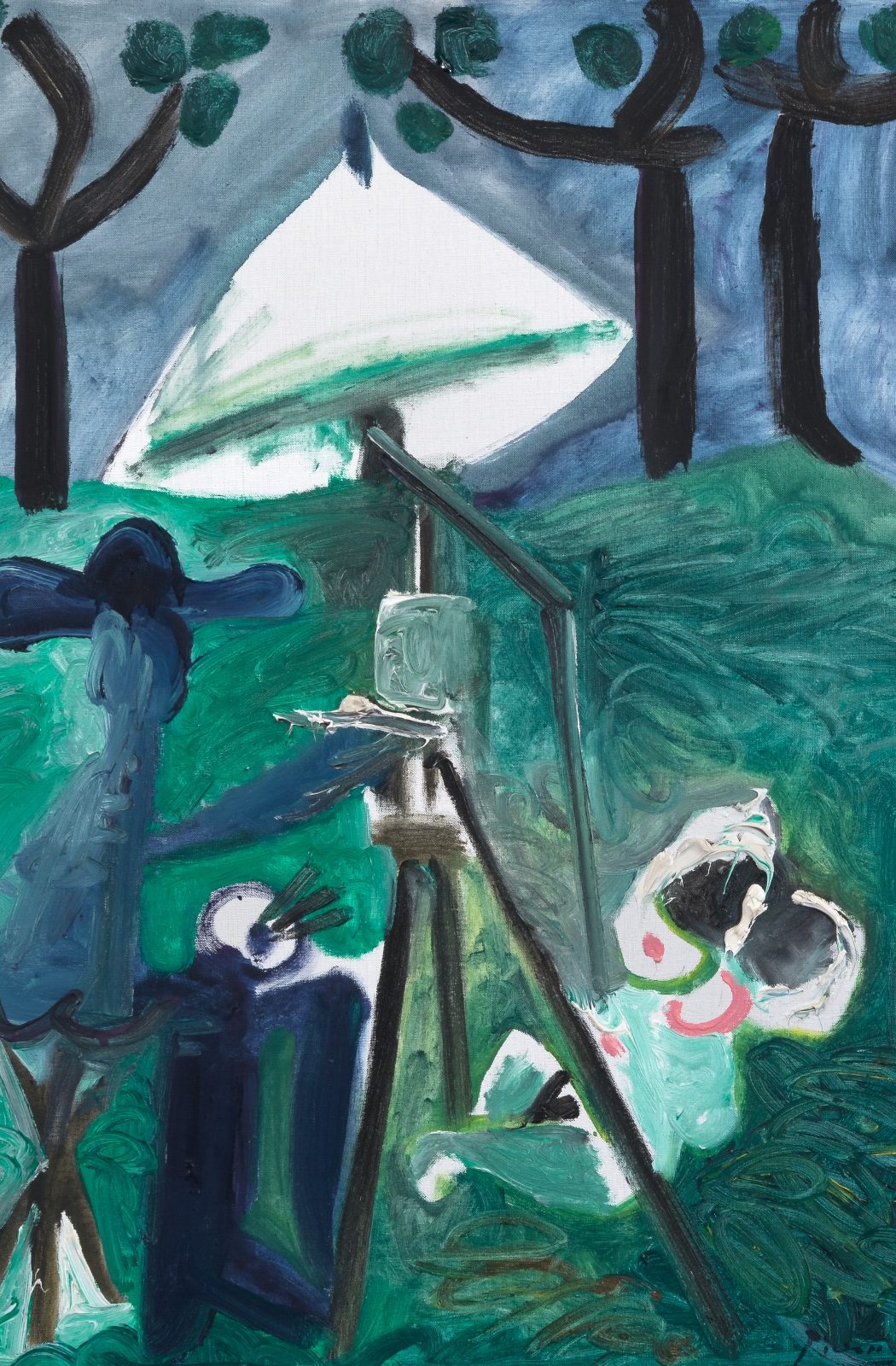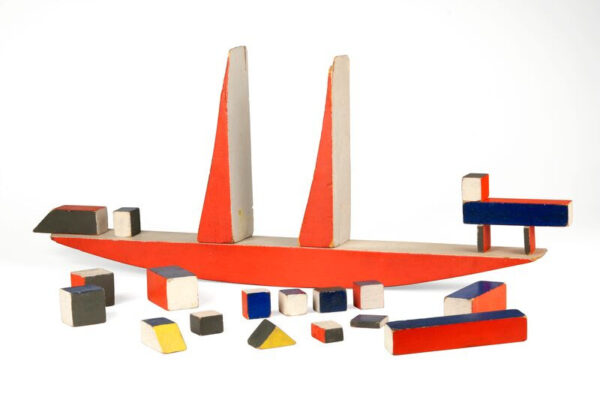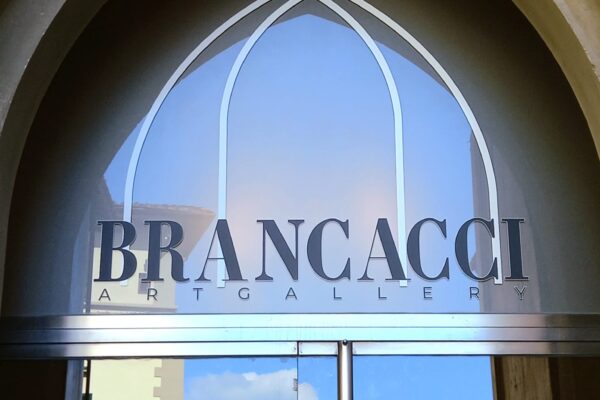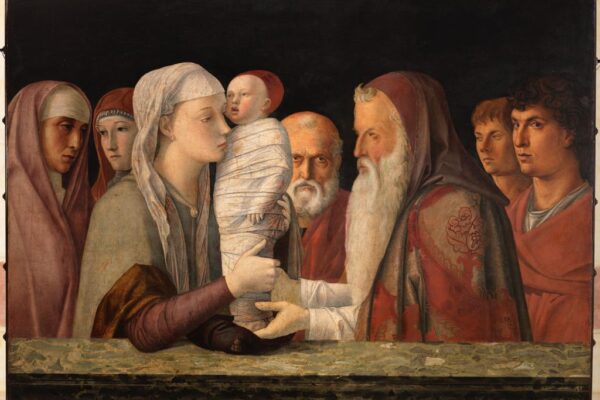Arrives for the first time on display in Rome at the palacerhinoceros the paintingThe painter and his model in the open airby Pablo Picasso fromIntesa Sanpaolo collection Galleries of Italy – Milan. After the great success with the public and the press achieved byYoung woman of 1909, coming from the Hermitage, the Alda Fendi Foundation - Experiments relaunches and proposes a painting by 1963 never exhibited in the capital and normally not visible to the public. Thus continues the tribute to the genius of Malagueño that anticipates the 2023, “Picasso year” on the fiftieth anniversary of the painter's death.
Starting from 10 June 2022, the painting is presented to the public in an exhibition entitled picasso goes, Picasso arrives which is set up at the exhibition spaces of rhinoceros gallery, inside the building rhinoceros designed by Jean Nouvel, a "neighborhood in the city" dedicated to art and inspired by the Paris Passages. The exhibition is open until 16 October, with free admission.
Pablo Picasso once again protagonist in the heart of monumental Rome, between the Arch of Janus and the Palatine Hill. Thanks to the patronage of Alda Fendi between February and May of this year the Capitoline public was able to admireYoung woman, the portrait of the artist's muse and companion, Fernande Olivier, guarded by the Hermitage of St. Petersburg. From the decomposition of the forms of analytic cubism of theYoung womanyou pass toa meditation on the relationship between the artist and the feminine. The theme, carried forward by Picasso over the decades, find in the pictureThe painter and his model in the open air of 1963 a synthesis that assumes, as Francesco Tedeschi writes, “The poetic values of an encounter with nature, in the idyllic atmosphere of a modern 'pastoral' ".
The work is the centerpiece of a theatrical installation, which revolves around the thousand facets of Picasso's universe. The exhibition runs through all floors ofrhinoceros galleryand crosses the entire buildingrhinoceros.The Alda Fendi Foundation - Experiments, with Raffaele Curi who traces the artistic line, disseminates and spreads its interference in onemultimedia exhibition platform, of which Picasso is the only and absolute protagonist.Thinking about the pictorial activity of the last period of this revolutionary artist beyond his own revolution, Alda Fendi, rebel patron and promoter of this ideal relay between the two paintings, reflects: “Failed artistsI'm out of the game and Picasso feels negative intoxication, but lashing, of bankruptcy, before being glorified for its decomposition of the image. His belief in a revolution is fiery and fiery, never lukewarm, but pyrotechnics in the hypothesis of a life described in geometric modules, which apparently become poetryout of the game”.
PICASSO, THE PAINTER AND HIS OPEN-AIR MODEL
The painter and his model in the open air by Pablo Picasso, oil on canvas by 1963, belongs to the Intesa Sanpaolo Gallerie d’Italia collection – Milan. The work was purchased by Banco Lariano, then merged into Intesa Sanpaolo, and originally comes from the Galerie Leiris in Paris, who in the 1960s dealt directly with Picasso's work.
The representation of the female nude outdoors, in a natural context, is a frequent subject in Picasso's art between the fifties and sixties, variation of the more general confrontation between the painter and the model that has accompanied his pictorial narration since the 1910s. The theme constitutes the meeting point between the reflection on the painter's profession, in dialogue with the history of art, and the representation of the female nude. A challenge, both for the possible solutions in the representation of the poses and their combination with the spatial form, both for the intrinsic meanings of the role of the artist.
The painter and his model in the open air of 1963 continues and echoes the meditations carried out by Picasso between 1960 and the 1961 around theLunch on the grass the Manet. The artist measures himself against his "masters of choice", to review the solutions and reinterpret them in the light of his personal employment in an "imaginary museum". Thus the famous subject of Manet's painting becomes a starting point for a disintegration and re-aggregation of the protagonists, of their poses and their role within the composition.
Picasso's attention is concentrated around the seated female nude and the man who observes it, in a dialogue that is one of complicity and seduction. The background is reduced to the predominant greens and blues, which are almost flattened into a homogeneous space, defined with the characteristic fast and rough stroke of the late Picasso. A few hints are enough for the crowns of the trees, a triangular element for the parasol above the stand, the silhouette of the hat, more as a bullfighter than as a painter. In this simplicity we find Picasso's ability to transform every gesture into a significant element.
AROUND PICASSO: MUSICA, DANZA, RACE AND PHOTO
The Experiment signed by Alda Fendi and Raffaele Curi composes visual and performing arts, ideally bringing together the two homelands - and the two souls - of the artist, Spain and France. Room after room, the multimedia installation that unfolds aroundThe painter and his model in the open air has a leitmotif: dance. From the enveloping projections that offer the visitor a privileged point of view on the evidence of deTemperanceby Miguel Ángel Berna for the National Ballet of Spain, to the disruptive modernity of the dances ofPulcinella. Single act represented for the first time at the Paris Opera in 1920, the balletPulcinella combines the music of Igor Stravinskij with the choreography of Léonide Massine for Sergej Djagilev's Ballets Russes. Along the exhibition path, a window opens onFlora Coffeedi Parigi, while the Picasso colors of Spain caress the faces of the spectators. In the black shaft designed by Jean Nouvel, a tribute to one of the greatest contemporary bullfighters, The Rafi (Rafi Racoule), 23 age, the sixty-ninthbull killer French. Bullfighting has a historical tradition not only in Spain, but also in the south of France, where Pablo Picasso used to attend with his sons Claude and Paloma and friends like Jean Cocteau. Thus the two souls of Picasso and his two countries intertwine and merge, Spain and France, that next year they will be united in the celebration of 50 years since the artist's death. Of the bullfight, Picasso loved color, gold and folklore and the great friendship that bound him to the most important is well knowntoreador of his time, eat El Cordobés and Manolete, and especially to Luis Miguel Dominguín and his family: Lucia Bosé and her children Lucia, Paola and Miguel Bosé. In the white chamber instead, in the presence of the rhinoceros symbol of the building, a writing on the wall recalls the words of Neruda. Raffaele Curi explains the connection with Picasso: "The amber dust that in the churches of Spain turns summer into a church of gold is striking to the heart. Neruda's poem that crystallizes a ray in an atemporal and ascetic hypothesis, creates the great friendship between Picasso's animus and Neruda's. Their friendship that alludes and refers to disruptive scenarios filled with perpendicular light and absolute colors that only summer can offer. 'Like summer in a golden church' ".
INFORMATION:
rhinoceros gallery
Address: Rome, via del Velabro 9A
The exhibition is open from Tuesday to Sunday from 11.00 to 24.00.
Free admission. È necessaria la prenotazionerhinocerosroma.com
(+39) 06 6797434









Leave a Reply